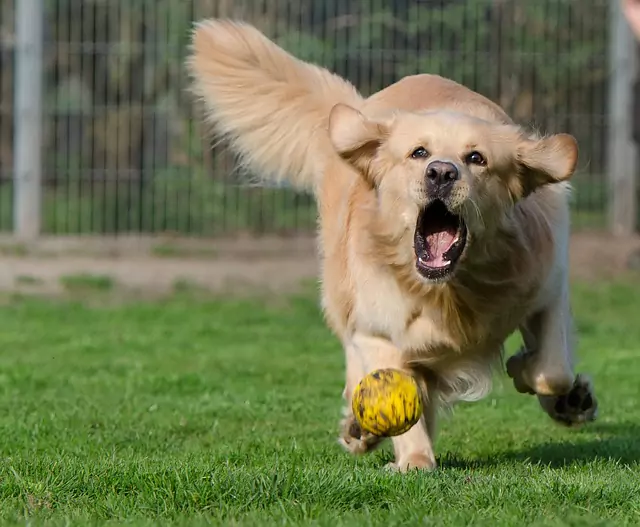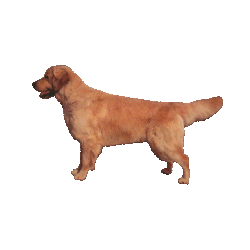
Obedience
Obedience, also known as “posłuszeństwo” in Polish, is an FCI (Fédération Cynologique Internationale) sport discipline with a 40-year tradition. Dogs of different heights and origins can participate in it. The goal of Obedience is to demonstrate not only a dog’s ability to perform specific exercises in an obedience ring but also the dog’s utility as a human companion.
Obedience is a sport, and all participants are required to adhere to the principles of sportsmanship, both inside and outside the ring. Obedience has three levels of difficulty, and in each level, dogs need to perform 10 different exercises for which they receive scores ranging from 20 to 40 points.
Despite the fact that all participants are required to perform the same tasks, which are judged in the same way, the main goal of Obedience is to have a well-trained dog whose behavior in various places and situations, even outside the ring, reflects Obedience principles. Tasks performed by the dog and handler in the ring must be executed accurately and correctly according to the regulations.
Obedience is a discipline that suits Retrievers very well because it is based on play and close contact with the handler. The exercises are not complicated, and the assessment focuses on the speed, precision, and the dog’s willingness to cooperate with the handler. World Obedience Championships are traditionally organized as part of international dog shows in Europe.

Obedience
Obedience, also known as “posłuszeństwo” in Polish, is an FCI (Fédération Cynologique Internationale) sport discipline with a 40-year tradition. Dogs of different heights and origins can participate in it. The goal of Obedience is to demonstrate not only a dog’s ability to perform specific exercises in an obedience ring but also the dog’s utility as a human companion.
Obedience is a sport, and all participants are required to adhere to the principles of sportsmanship, both inside and outside the ring. Obedience has three levels of difficulty, and in each level, dogs need to perform 10 different exercises for which they receive scores ranging from 20 to 40 points.
Despite the fact that all participants are required to perform the same tasks, which are judged in the same way, the main goal of Obedience is to have a well-trained dog whose behavior in various places and situations, even outside the ring, reflects Obedience principles. Tasks performed by the dog and handler in the ring must be executed accurately and correctly according to the regulations.
Obedience is a discipline that suits Retrievers very well because it is based on play and close contact with the handler. The exercises are not complicated, and the assessment focuses on the speed, precision, and the dog’s willingness to cooperate with the handler. World Obedience Championships are traditionally organized as part of international dog shows in Europe.
Tasks to Perform at Different Levels of Difficulty:
Level I:
Staying in a group (2 minutes)
Walking on a leash (normal pace)
Walking without a leash (normal pace)
“Heel” from a walk
“Heel” from a run with a recall to the owner (the dog must sit in front of the handler and then beside them)
Jumping over an obstacle (there and back)
Sending “Forward” (20 steps)
Retrieving a wooden dumbbell
Finding the handler’s object among two placed objects
Distance control (“Sit,” “Heel”)
Level II:
Staying in a group (3 minutes) out of the handler’s sight
Walking on a leash (normal pace and running)
Walking without a leash (normal pace and running)
“Sit” and “Heel” from a walk
Recalling the dog from “Sit” and “Stay”
Sending “Forward” to a marked square, followed by a “Heel”
Jumping over an obstacle with a wait
Retrieving an object (either left or right)
Finding one of 4 objects
Distance control (“Sit,” “Heel,” “Sit,” “Heel”)
Level III:
“Sit” in a group for 2 minutes (out of the handler’s sight)
“Heel” for 4 minutes with distractions (out of the handler’s sight)
Heelwork at a walk (normal pace, slow pace, running)
“Stay,” “Sit,” and “Heel” from a walk
Recalling the dog with “Stay” and “Heel” commands
Sending “Forward” to a marked square
Retrieving on command from 3 objects
Jumping over an obstacle with a retrieved metal object
Recognizing the handler’s object from 6 options
Distance control (“Stay,” “Sit,” “Heel”)
Agility
Agility, known as “zręczność” or “zwinność” in Polish, is a dog sport that involves navigating an obstacle course by a dog guided by a handler. The goal is to complete the course in the shortest time while adhering to specific regulations. Agility can be practiced by all dogs, both purebred and mixed breeds.
The essence of agility is that it’s a sport for anyone who enjoys running, jumping, is lively, and likes to have fun with their dog. There is no upper or lower age limit for handlers. Both very young and older individuals can participate in it.
Agility was first demonstrated in 1978 at Crufts dog show in the UK. In Poland, compared to other countries, agility is still relatively less popular but is gaining more supporters. The agility course consists of various obstacles, some of which are inspired by equestrian courses. Obstacles include hurdles, walls or viaducts, long jumps, palisades, swings, tunnels (both flexible and rigid), tires, bridges, slaloms, and tables.
The most important aspects of agility are cooperation and understanding between the handler and the dog. During training, basic obedience is essential, as is the dog’s comprehension of voice commands and gestures given by the handler.
Agility not only emphasizes error-free obstacle completion but also the speed at which the entire course is completed. The agility regulations consider the height categories of dogs, so small and large dogs can participate in competitions.
There are already many specialized agility clubs in Poland.
Dog Dancing
Dog Dancing, known as “psi taniec” or “taniec z psem” in Polish, originated in Canada in 1980 under the name FREESTYLE. American and Canadian dog enthusiasts added music to their obedience routines to make them more enjoyable and realized that working with dogs became much more pleasant and relaxed.
In 1989, an American named Ms. Daws Jecs began working on dance elements for dogs and their handlers at her school. After the first official presentation, it became the basis for today’s Dog Dancing. In 1990, FREESTYLE reached England, where it was first presented by Ms. Mary Ray at Crufts Dog Show under the title HEELWORK TO MUSIC.
At the end of 1997, Ms. Angela Schmid, who had gained skills from Ms. Mary Ray, organized the first Dog Dancing shows. These shows took place in Luxembourg, and the first true premiere happened in Switzerland in January 1998 under the name DOG DANCING.
There are two main types of dog dancing:
Heelwork to Music, which mainly involves walking with the dog to the beat of selected music.
Freestyle, which offers more freedom and allows for the presentation of creativity, imagination, and skills. In this style, dogs can work at a distance from the handler, and it is highly appreciated by judges.
Scoring in dog dancing somewhat resembles the short program in figure skating. There are mandatory figures, but choreography, arrangement, and the creativity of performing figures belong to the competitors.
Some of the elements in dog dancing include heeling on the left and right side, walking backward and sideways, front-facing heeling, recalls to the handler’s front, back, and sides, turns, circling the handler, slalom between the handler’s legs while standing or walking, jumping over a raised leg or arm, bowing, stopping, and more.
Dog dancing is gaining popularity in Poland, and there are already active centers in Wrocław and Białystok. It is a sport that strengthens the bond between owners and their dogs and is especially captivating when performed by charming and graceful Golden Retrievers.
